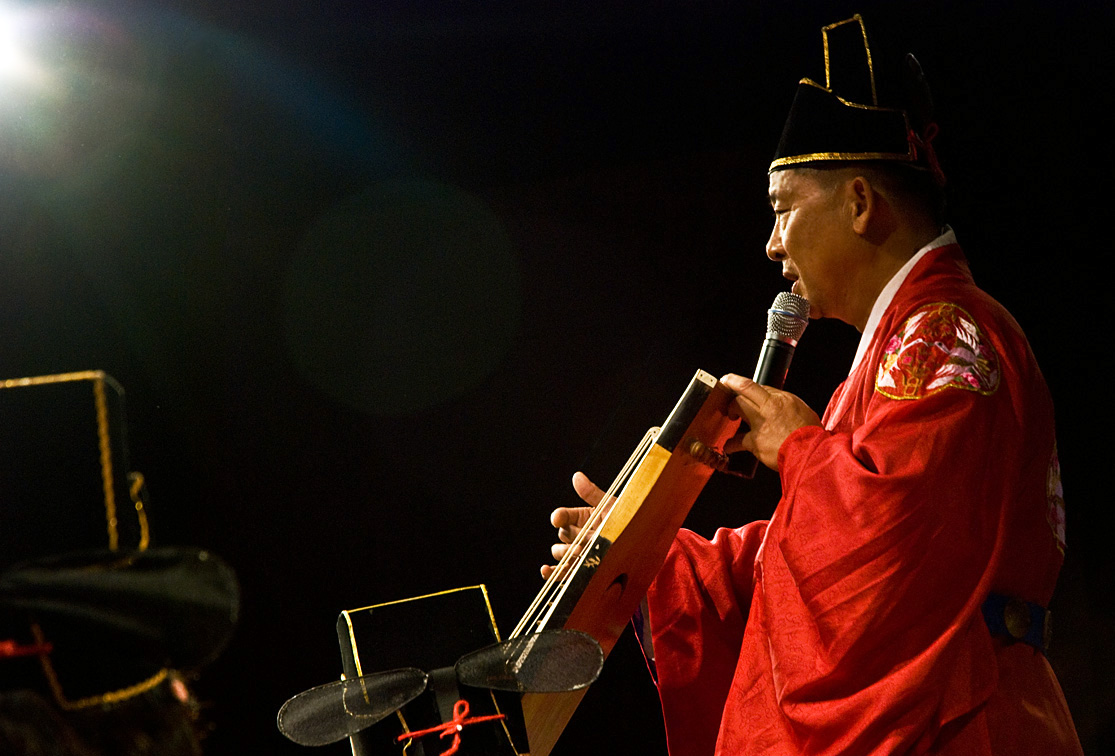The Fowler Museum of Cultural History and the UCLA Korean Music and Dance Ensemble are giving audiences an opportunity to see traditional music and dance performed in full costume today at 6 p.m. The Korean Music and Dance Ensemble will be performing at the museum as part of the Fowler Out Loud! series, which promotes the intercultural themes of many Fowler exhibits through a variety of art forms.
As UCLA is known for its diverse population of students, the Fowler Out Loud! performance series is designed to showcase the many talents UCLA brings from all over the world, including East Asia. Sara Stranovsky, campus coordinator for Fowler Out Loud!, is organizing this series in hopes of getting more exposure for artistically skilled UCLA students as well as emphasizing the intersection of art mediums.
“I want to show people that the Fowler is not just about the art on the walls. … We’re constantly making a bridge between students, performers and curators of culture at the museum,” Stranovsky said. Stranovsky also expressed great enthusiasm about the upcoming performance of the UCLA Korean Music and Dance Ensemble.
“They are a vibrant, dynamic and talented group. It’s an honor to have them performing here,” Stranovsky said.
A demonstration of the Three Drum Dance by UCLA alumna Mission Kim, who twists and bends while hitting different drums in time, displays the agility that is involved in Korean dance. The dances are not just about content but presentation as well.
Adding to aesthetics are the visually diverse costumes the performers wear, which are different to suit each dance. For the Wa-gwan Mu, or Flower Crown Dance, quality ornamented costumes fit to be worn in front of kings and queens are used. For the Three Drum Dance, a simple top and skirt are worn. Other dances, such as the Fan Dance, incorporate props including fancy fans, billowing scarves and shimmering swords.
“It’s a different world because the costumes and performances aren’t something you can see every day, as they are historical and traditional,” Kim said.
Some members have grown up with Korean dance, such as Tiffany Cho, a third-year neuroscience student who began dancing at the age of 4. Others, such as Kim, got started at the university.
“I joined because it looked beautiful, elegant and fun,” Kim said.
The dancers learn the historical purpose and background behind each dance, in addition to the moves. The dances vary in style and rhythm, requiring the dancers to concentrate and focus on breathing techniques.
“A lot of different elements come together in the choreography and music,” Cho said.
While the dancers make their own music, the ensemble’s musicians also help flesh out the performance. Donning court dress costumes from the Joseon Dynasty, the musicians perform a variety of Korean instruments that blend into one another to create enjoyable harmonies.
Contributing to the ensemble is the Komungo, a cello-like instrument that is played on the floor with a bamboo stick the size of a pencil. Jai Chung, a fourth-year biochemistry student, said he enjoys playing it for the deep, heavy bass sound it produces. Chung first got interested in the traditional instrument when he saw it being played in the streets of Korea where he lived. He decided to take it up himself in college in the United States.
“It was more special to play it in the U.S. because it is not as commonly played here,” Chung said.
For many Koreans in America, tradition art forms such as music and dance can serve as communal and expressive mediums for cultural heritage.
“There is a passion that helps the audience sympathize and be influenced by the atmosphere it creates,” Chung said.
Ethnomusicology professor and director of the Korean Music and Dance Ensemble Donald Kim compares Eastern and Western styles to right and left, but commends the adaptive abilities of Korean students who grew up in the West.
This adaptation gives them an open-mindedness that serves them well in the ensemble and in such a culturally diverse setting as UCLA. According to Kim, these contrasting cultures have different styles of artistic presentation, but still produce a universal effect.
“The result is the same: human feeling,” Kim said.
The ensemble usually performs once a week, giving them a lot of experience that is evident in their shows. Each time, they demonstrate a piece of Korean culture to a wide variety of audiences.
“It’s like being transported to another era, being able to experience these dances that were performed centuries ago,” Cho said.
